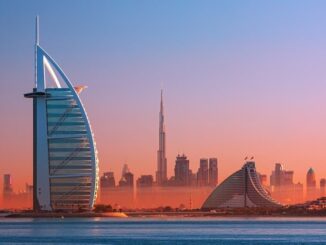![Let’s Redesign Public Spaces with Cycling [Promoted content] Cycling](https://energynewsbeat.co/wp-content/uploads/2024/06/tobias-cornille-ZPpC98Vus3k-unsplash-450x300-NyEL6q.jpeg)
More widespread bicycle use requires more investment in safety and more efficient infrastructure, including separate cycle lanes, strict speed limits and better enforcement of traffic rules.
Arianna Censi is a Local Councillor in Milan and Rapporteur on the European Declaration on Cycling.
What citizens want for the World Bicycle Day and beyond
During my mandate as Mobility Deputy Mayor for the City of Milan – I noticed significant frustration and misunderstandings between cyclists and motorists. It became evident that it is counterproductive when different modes of mobility antagonise each other. Instead, we must advocate for a fairer allocation of public spaces among all types of mobility. In practical terms, this entails substantially reducing the public areas occupied by private cars.
For decades, since the start of mass production of automobiles in the early 20th century, cities have been deliberately designed to accommodate car dependency. The tunnels and urban highways in Brussels or in Milan, exemplify this trend. Consequently, urban areas have become epicentres of air pollution, noise, heat islands and a dearth of green spaces, all of which adversely affect human health and wellbeing. In Europe, cars occupy 60% of public space, despite only accounting for a quarter of all trips. Clearly, this space could be repurposed in a healthier manner.
Therefore, a new vision for mobility in our regions and cities is necessary. This vision materialised through the interinstitutional European Declaration on Cycling, signed on 3 April 2024, at the Informal Council meeting of Transport Ministers, led by the Belgian EU Presidency at Egmont Palace in Brussels.
This is the EU’s most ambitious cycling policy initiative to date, recognising cycling as a strategic priority with substantial benefits for Europe. As the rapporteur for the European Committee of the Regions on this declaration, my primary goal is to ensure its implementation. I can assure you that this declaration’s success depends on the involvement of local and regional authorities.
Cities and regions have innovative ideas but need support to implement them. To achieve the goals of sustainable urban environments and a higher modal share for cycling, European and national support is essential. The EU must ensure that regions and cities are eligible for funding through mechanisms such as the Connecting Europe Facility (CEF) or unspent Recovery and Resilience Facility (RRF) funds, to invest in sustainable transport systems.
Developing cycling infrastructure is crucial for reimagining public spaces in a way that they become more sustainable, high-quality, and liveable. Separate cycling paths, 30 km/h zones and enhanced multimodal hubs for smooth transfers between transport modes all require funding. In addition to their primary objective in support of cycling, these measures foster the implementation of the European Green Deal and the EU’s commitment to carbon neutrality by 2050.
However, funding alone is not enough. A European review of regulatory frameworks for cycling should be conducted by Member States and shared at the European level to establish indicative minimum European standards for cycling infrastructure, respecting subsidiarity and proportionality principles. This review should consider local land use and the suitability of solutions for various urban environments.
Ultimately, cycling will drive transformative change in our cities, reclaiming public spaces and enhancing quality of life. This should be our priority and we should consider designating a European Year of Cycling in the coming years. Furthermore, in light of the upcoming European elections, I call on the European Commission to emphasise its support for cycling by increasing communication on 3 June, which was chosen as World Cycling Day, and to consider identifying a European Year of Cycling in the coming years.






